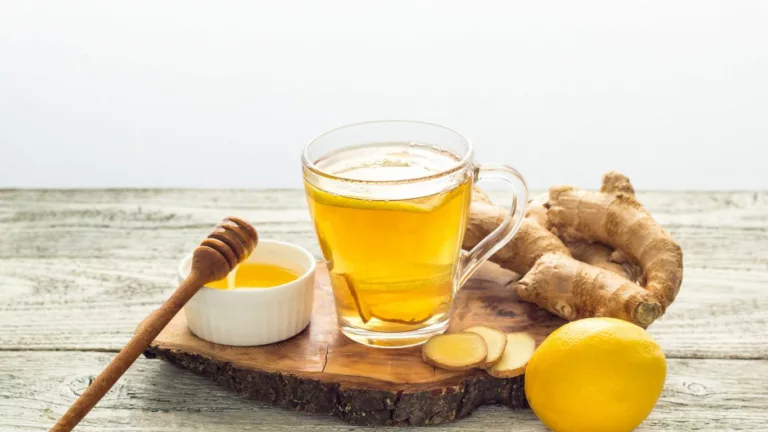Best GERD Friendly Thanksgiving Meals to Enjoy Without the Burn
Let me tell you something—Thanksgiving used to be a minefield for my acid reflux. One wrong bite, and I’d be stuck on the couch, chest burning, missing out on all the family fun. If you’ve been there, you know the struggle. Thankfully, over the years, I’ve learned that you don’t have to sacrifice flavor to stay symptom-free. You just need to get a little creative with your holiday plate. Whether you’re hosting or bringing a dish to dinner, these GERD-friendly Thanksgiving meal ideas will help you enjoy every bite—without the burn.
Appetizers That Keep the Fire at Bay

Start Light, Stay Calm
Skip the typical cheesy dips and heavy starters that can trigger acid reflux. Instead, go for lighter options that are still festive and satisfying.
- Hummus with soft pita or cucumber rounds – Make sure to avoid spicy versions. Try a homemade, garlic-light version for better digestion.
- Roasted butternut squash bites – Mild, naturally sweet, and easy on the esophagus.
- Mini turkey meatballs – Bake instead of fry, and skip the tomato-based sauces. A touch of low-fat gravy works wonders.
Why It Works
These starters are low in fat and acid, two of the biggest triggers for reflux. According to the Mayo Clinic, high-fat foods tend to relax the lower esophageal sphincter, making reflux more likely. Swapping in baked, lightly seasoned, or naturally sweet options can make a huge difference.
Safe and Satisfying Main Course Options

The Turkey—Done Right
You don’t need to give up turkey, but how you prepare it matters.
- Roasted, skinless turkey breast – Opt for lean white meat and remove the skin before serving.
- Skip the stuffing (or tweak it) – Traditional stuffing can be high in fat and seasoning. Instead, make a GERD-friendly version using low-acid bread, unsalted broth, and fresh herbs.
Gravy with a GERD-Friendly Twist
Yes, you can have gravy. Just use a reduced-sodium, fat-skimmed broth base, thicken it with a small amount of flour or cornstarch, and avoid black pepper or garlic-heavy seasoning.
Still worried about that main dish? You’re not alone. This GERD-friendly diet guide has helped thousands rethink their approach to everyday meals—including holiday spreads.
Side Dishes Without the Afterburn

Sweet Potatoes Over Mashed
Sweet potatoes are an excellent GERD-friendly side—naturally alkaline, low-fat, and fiber-rich. Try them roasted with just a dash of cinnamon (no marshmallows, please).
Green Beans, Hold the Casserole
Skip the creamy casserole and instead steam or sauté green beans lightly in olive oil with a touch of lemon zest and parsley.
Rice Pilaf or Quinoa
If stuffing is off the table, consider a warm bowl of rice pilaf or quinoa with slivered almonds and herbs. It’s filling and won’t upset your stomach. For more on this, check out this breakdown on rice and reflux.
Desserts That Won’t Come Back to Haunt You

No-Pie? No Problem
Traditional pies can be acid bombs—thanks to the citrus, sugar, and buttery crust. Instead, try:
- Low-fat banana bread – Moist, comforting, and reflux-safe when made without dairy.
- Baked apples with cinnamon and oats – Naturally sweet and full of fiber.
- Almond or rice milk pudding – Creamy without the dairy overload.
Watch the Toppings
Skip the whipped cream and go for a drizzle of honey or a spoon of Greek yogurt if tolerated. For those sensitive to dairy, almond-based options work great.
What to Drink (And Definitely What Not To)

Avoid the Big Three
Alcohol, citrusy drinks, and caffeine are major no-gos. Even one glass of wine or a fizzy soda can undo an otherwise GERD-safe meal.
Better Options
- Chamomile tea – Calming and digestive-friendly. Here’s why it works.
- Coconut water – Naturally low-acid and hydrating.
- Alkaline water – A good neutral option if you’re extra sensitive.
I personally go with warm water with a slice of peeled cucumber—it sounds odd, but it’s soothing and refreshing after a rich meal.
Hidden Triggers to Watch For

Common Sneaky Offenders
Sometimes it’s not the obvious foods that get you—it’s the sneaky ones hiding in holiday dishes. Keep an eye out for:
- Onions and garlic – even small amounts in gravy or stuffing can irritate the stomach lining.
- Black pepper – opt for herbs instead, like thyme or basil.
- Full-fat dairy – cream, butter, and cheese can all increase reflux risk.
- Tomatoes – including in sauces, dips, or even salads.
If you’re unsure, bring a dish or two of your own to share—it guarantees there’s something on the table you can safely eat, and nobody will complain about an extra homemade option.
Looking to understand your triggers more deeply? You might want to read through this guide on lesser-known GERD causes.
GERD-Friendly Thanksgiving Leftovers You’ll Actually Look Forward To

Let’s Be Honest… Leftovers Are Half the Fun
Okay, confession time—sometimes I look forward to the leftovers more than the actual meal. But when you’re dealing with GERD, that leftover sandwich or second-day stuffing can be reflux landmines unless you tweak them just right.
Ideas That Won’t Trigger You
- Turkey & rice wrap – Use a soft whole grain wrap (low-acid), add sliced turkey breast, baby spinach, and a light smear of mashed sweet potato.
- Stuffing muffins (GERD-style) – Bake your leftover low-fat stuffing in muffin tins. Skip any sausage or acidic veggies.
- Warm rice bowls – Toss turkey with leftover rice, sautéed green beans, and drizzle with a GERD-safe dressing or mild vinaigrette.
Be Careful Reheating
Microwaving in plastic or reheating heavily spiced dishes can intensify acidity. I always reheat mine in a pan with a little broth—it keeps it moist and gentler on digestion.
Tips for Hosting or Attending GERD-Safe Thanksgiving

Communicate With Your Host (Kindly)
If you’re attending, don’t be shy about asking what’s on the menu. I’ve found most people are more than happy to accommodate as long as you’re polite—and maybe offer to bring a dish or two.
Prep a Safety Dish
Bring one hearty, reflux-safe item that can double as a main if needed. My go-to is a quinoa salad with turkey bits, zucchini, and basil. It’s simple, light, and always gets compliments.
Don’t Skip Meals Beforehand
Going in starving is a mistake—overeating is one of the biggest GERD triggers. Have a small, safe breakfast and light lunch before the big meal. For options, this GERD-friendly breakfast guide has you covered.
Eat Slowly, Enjoy More
You’ve probably heard this a million times, but slowing down seriously works. Chewing thoroughly and spacing out bites can help reduce pressure in your stomach—making reflux less likely. I even use a smaller plate to pace myself.
Smart Substitutes for GERD-Safe Holiday Cooking

Ingredient Swaps That Actually Taste Good
Don’t roll your eyes yet—these swaps don’t just “get the job done.” They actually taste amazing.
- Greek yogurt instead of sour cream – Less acidic and just as creamy. Great in mashed potatoes or dips.
- Oats or quinoa instead of bread crumbs – Works for stuffing or coating meat.
- Low-acid fruits like pears or bananas – Use in desserts or salads instead of apples or citrus.
- Herbs instead of spices – Basil, thyme, parsley, and dill add plenty of flavor without irritation.
Need more cooking inspiration? These low-fat GERD-friendly recipes are lifesavers during the holidays.
Dining Out for Thanksgiving? Here’s How to Handle It

It’s All About the Questions
Don’t be afraid to ask how dishes are made—especially gravies, sauces, or marinades. Most restaurants can offer plain turkey or steamed sides on request.
Scan the Menu Like a Pro
Stick to terms like “grilled,” “steamed,” or “roasted.” Avoid “smothered,” “spicy,” “creamy,” or anything that hints at fried.
Pick GERD-Safe Sides
- Steamed veggies (hold the butter or seasoning)
- Plain rice or mashed sweet potato
- Roasted turkey, no skin
And if dessert is a must, go for something like a fruit cup, baked pear, or one bite of something indulgent followed by a few sips of chamomile tea. Trust me, it works wonders.
Holiday Stress & Reflux: An Overlooked Connection

Stress Makes It Worse. Period.
No matter how “clean” I eat, if I’m overwhelmed, anxious, or not sleeping, the reflux shows up. There’s actually solid science on this—chronic stress can directly impact gut function and esophageal pressure. According to PubMed, stress-related reflux is a real and measurable issue.
How to Keep Your Cool
- Take short walks before or after dinner – Movement aids digestion and clears your head.
- Try box breathing or deep breathing techniques – I swear by the 4-7-8 method before meals.
- Use a wedge pillow if you’re sleeping away from home – It’s bulky, but worth it.
Still struggling with stress flare-ups? This article on managing stress and reflux helped me rethink my whole routine last year.
Give Yourself Permission to Enjoy (Without Regret)

Here’s the thing—Thanksgiving isn’t about food perfection. It’s about connection, celebration, and gratitude. Don’t beat yourself up if you slip up and need a chewable antacid or a break on the couch. It happens. But if you go in with a plan, prep some GERD-friendly options, and eat mindfully, I promise you can enjoy the holiday without discomfort ruining the moment.
And hey, if you’re still feeling stuck or your symptoms are flaring often, maybe it’s time to revisit your basics. This comprehensive guide on natural GERD relief might be exactly what you need heading into the new year.

Camellia Wulansari is a dedicated Medical Assistant at a local clinic and a passionate health writer at Healthusias.com. With years of hands-on experience in patient care and a deep interest in preventive medicine, she bridges the gap between clinical knowledge and accessible health information. Camellia specializes in writing about digestive health, chronic conditions like GERD and hypertension, respiratory issues, and autoimmune diseases, aiming to empower readers with practical, easy-to-understand insights. When she’s not assisting patients or writing, you’ll find her enjoying quiet mornings with coffee and a medical journal in hand—or jamming to her favorite metal band, Lamb of God.






